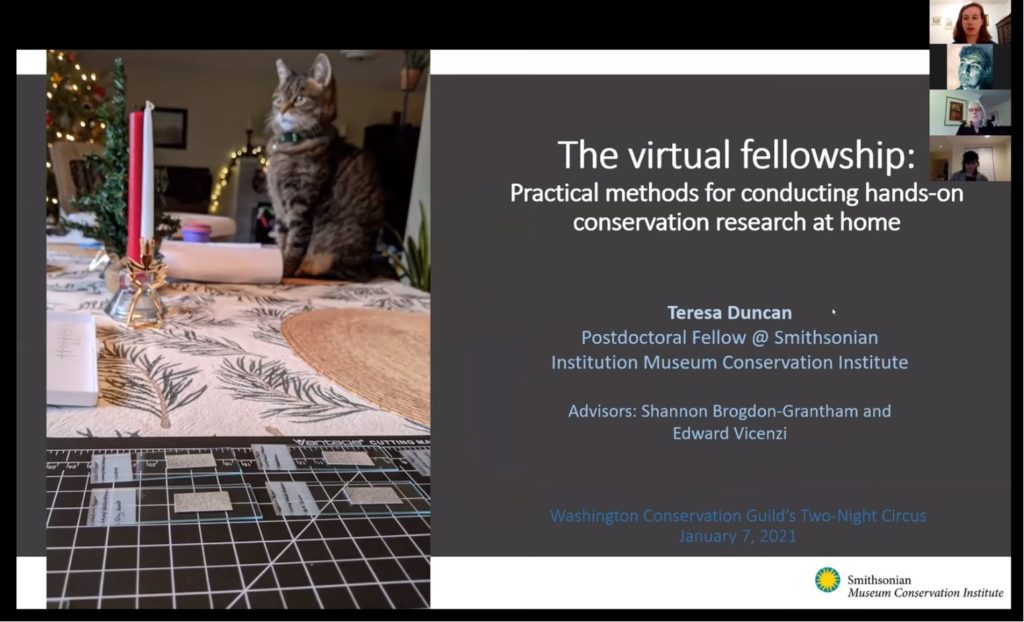Date of Presentation: January 7, 2021
Presenter: Dr. Teresa T. Duncan, Post-Doctoral Follow at the Museum Conservation Institute (MCI), Smithsonian Institution.
Meeting Summary by Adrian Hernandez, Pre-Program

In this presentation, Dr. Duncan summarizes how her intended research project, studying the use of different materials for soot removal, was adapted for work-from-home capabilities in light of Covid-19 lockdown. Dr. Duncan’s research, inspired by the recent fire at the Notre Dame Cathedral in Paris, is focused on exploring the process of soot removal. Her work is supervised by Shannon A. Brogdon-Grantham, Photographs Conservator, and Edward P. Vicenzi, Research Scientist, both at MCI. The proposal for the post-doctoral fellowship was called “the removal of soot from model substrates relevant to archival heritage.” However, the pandemic and subsequent work-from-home environment forced a revision of the project and narrowed its scope. Instead of testing both wet and dry cleaning methods, she chose to focus on dry cleaning methods in order to “maximize the use of commercially-available materials” and expanded those to include a cosmetic sponge, soot sponge, dry swab, erasers, and eraser crumbs. The eventual goal is to slowly increase complexity and move into wet cleaning methods. Similarly, her test substrates were reduced from five films or papers to just gelatin-sized watercolor paper, which comes in different roughnesses, a variable she could observe. Her expected output will include a cleaning survey, which she can still perform using photo documentation and a color spectrophotometer, borrowed from MCI. The aim of the cleaning survey is to determine “how cleaning efficacy would depend on substrate properties, specifically … to correlate them with surface roughness.” Her scientific investigation was also able to continue in this new work environment, as she was able to borrow a USB Microscope and plans to get Scanning Electron Microscope (SEM) images of some of her samples from staff who are able to visit MCI on a limited basis.
After introducing her research, Duncan gave a small tour of her home lab and provided images of some of her preliminary tests, which demonstrated the flexibility that is necessary when conducting research at home. Additionally, she provided a list of tips for this type of at-home research process, while emphasizing the creation of safety protocols. Duncan concluded by stating that “at-home hands-on research can be performed.” She welcomes inquiries about her at-home research strategies and feedback regarding her work in soot removal.
Her email is provided at the end of the presentation, which can be seen on WCG’s YouTube channel (starting at 23:20): https://www.youtube.com/watch?v=5sDiGtEPmlA&t=46s.